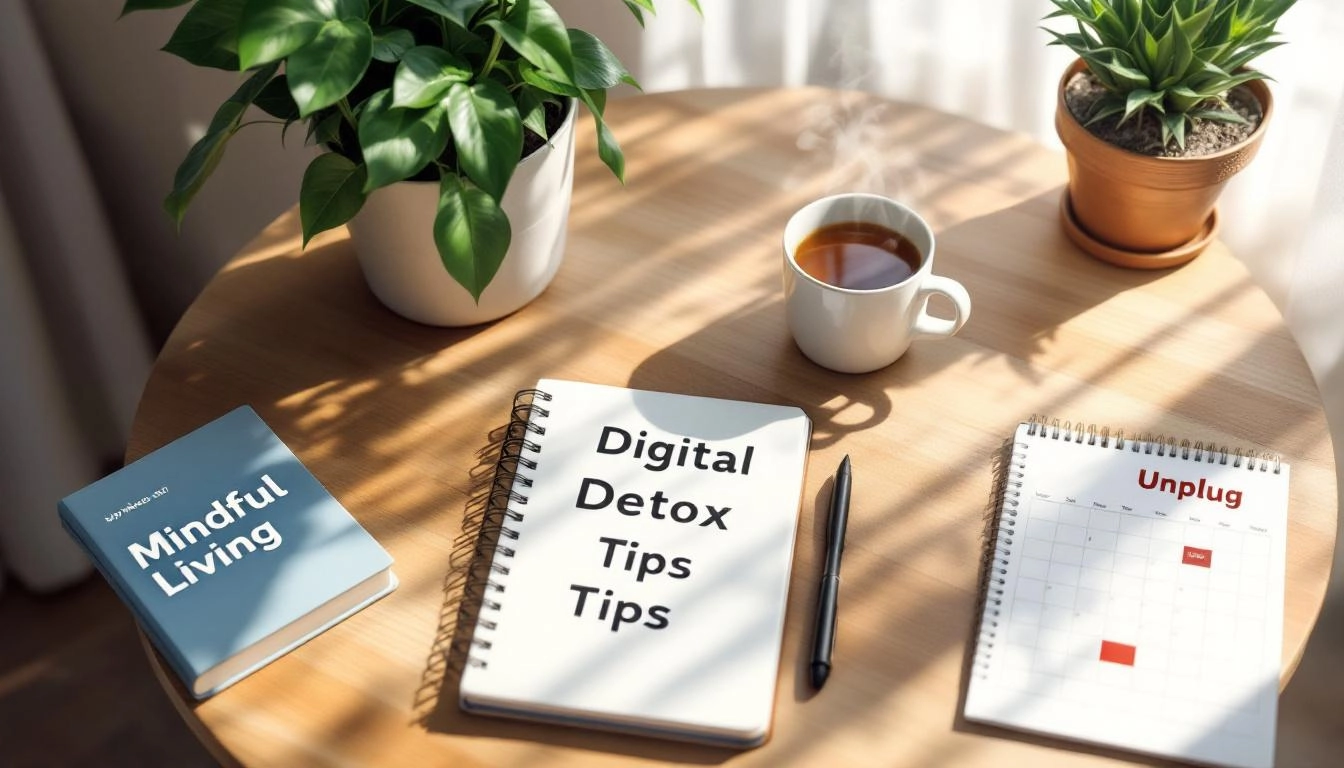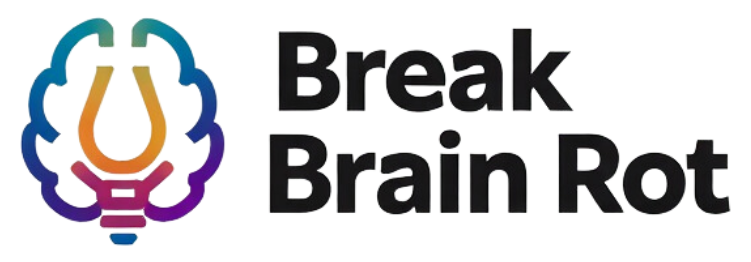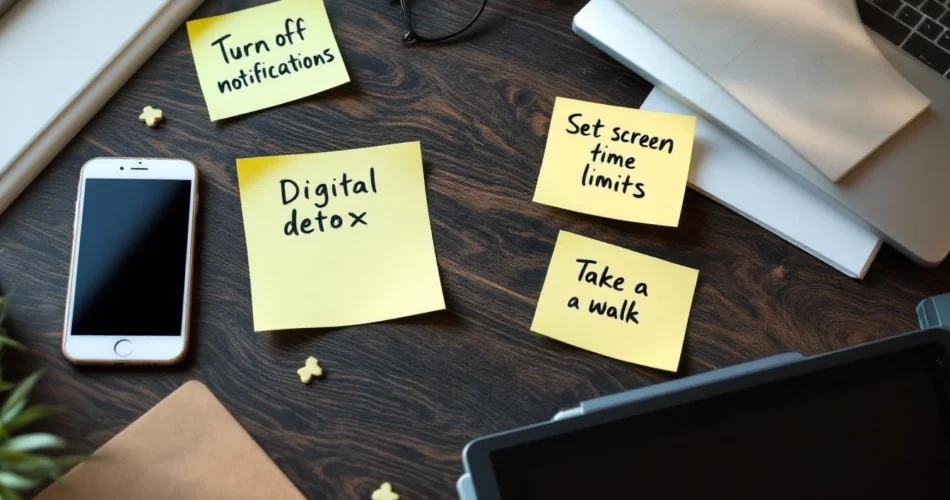Table of Contents
- Why a Digital Detox Matters
- Setting Boundaries with Technology
- Easy Daily Digital Detox Habits
- Weekend or Short-Term Detox Ideas
- Long-Term Lifestyle Changes for Digital Wellness
- FAQs
- Conclusion
Why a Digital Detox Matters
The Impact of Constant Connectivity on Mental Health
The average person checks their phone over 90 times a day. Constant connectivity can quietly increase stress levels, exacerbate anxiety, and contribute to mental fatigue. The American Psychological Association notes that frequent technology use is linked to higher stress, often dubbed “tech stress.” When your brain is perpetually stimulated by pings and alerts, it’s harder to relax, sleep, and focus.
Benefits of Taking Tech Breaks
Stepping back from your devices—whether for a few hours or a whole day—has clear benefits. You may notice improved concentration, better sleeping patterns, more energy, and heightened creativity. Digital detoxes can also strengthen in-person relationships, as you reclaim quality time with family and friends.
Statistics on Screen Time Overload
Global studies show that adults now average over 6 hours of screen time daily. This not only strains the eyes but also reduces productivity. If you want to learn more about this link, check out our guide on how screen time affects productivity.

Setting Boundaries with Technology
Create Tech-Free Zones in Your Home
Designate certain areas—like your bedroom or dining table—as device-free zones. This simple boundary helps you relax and promotes genuine connection during meals or before bedtime.
Establish Clear Online-Offline Routines
Start and end your day without your phone or laptop. Instead, enjoy a morning coffee, journal, or take a short walk. In the evening, read a book or stretch rather than browsing social media.
Use App Timers and Focus Tools
Paradoxically, technology can help you limit technology. Use built-in tools like Apple’s Screen Time or Google’s Digital Wellbeing (learn more here) to set app usage limits, track your habits, and encourage mindful consumption.
Easy Daily Digital Detox Habits
Start Your Day Without Screens
Resist the urge to check emails or news as soon as you wake up. Replace that habit with activities that set a calm, mindful tone for the day—like meditation, gentle stretching, or writing down your goals.
Introduce Scheduled Digital Breaks
Try the Pomodoro Technique: focus for 25 minutes, then take a 5-minute device-free break. Use lunch as a no-screen zone, or take a midday outdoor walk to refresh your mind.
Replace Scrolling with Offline Activities
Every time you feel the urge to pick up your phone, choose a different activity: read a physical book, start a puzzle, cook a new recipe, or do a quick home workout. For more ideas, visit our piece on mindful morning rituals.
Weekend or Short-Term Detox Ideas
Take a Social Media Fast
Commit to staying off social platforms for a weekend. Log out of your accounts or temporarily deactivate them to remove temptation. Use the extra time for personal projects or relaxation.
Plan Outdoor Activities or Mini Trips
Nature has a natural calming effect. Plan a hike, bike ride, picnic, or local sightseeing trip. Fresh air and physical movement are excellent antidotes to screen fatigue.
Do a 24-Hour Digital Sabbath
Choose one day a week to unplug completely. Notify friends and colleagues in advance, prepare offline entertainment, and spend the day screen-free. Reflect afterward on how it felt and what you learned.
Long-Term Lifestyle Changes for Digital Wellness
Prioritize Offline Relationships
Schedule regular in-person meetups with friends or family. Shared experiences create deeper bonds than online interactions alone.
Redesign Your Workspace for Minimal Distraction
Remove unnecessary devices or turn off secondary monitors when not in use. Keep your phone out of reach to help you focus on one task at a time.
Practice Mindful Technology Use
Before opening an app or checking your phone, pause and ask yourself why. Are you seeking information, connection, or just distraction? Becoming aware of your tech habits is a powerful step toward lasting change. Read more about mindful technology use here.
Frequently Asked Questions
How long should a digital detox last for it to be effective?
Even a few hours can help, but many people find that a full day or weekend creates noticeable benefits. Choose a duration that feels realistic and repeatable.
Can I do a digital detox without completely disconnecting from work?
Yes. You can set boundaries—like checking work emails only during specific hours—while avoiding personal screen use outside those times.
What are the best offline hobbies to replace social media browsing?
Consider hobbies that engage your hands and mind, such as painting, gardening, cooking, or playing an instrument.
Is it okay to use technology to support a digital detox?
Absolutely. Tools like screen time trackers and focus apps can help you enforce limits and build healthier habits.
Will a digital detox improve my sleep?
Yes. Cutting screen time before bed reduces exposure to blue light, which can help your body produce melatonin and improve sleep quality.
What should I do if I struggle to stick with a digital detox?
Start small, with short daily breaks, and increase over time. Find accountability by involving friends or family in your detox challenge.
How can I measure my progress during a digital detox?
Track your mood, focus levels, and sleep quality before and after your detox. Many notice measurable improvements in just a few days.
Conclusion
Constant digital engagement doesn’t have to control your time, focus, and well-being. By trying these **easy digital detox tips**—from creating tech-free zones and adding mindful breaks to enjoying full-day screen-free experiences—you can take back control over your life. Start small, experiment with different strategies, and discover what works for you. Your mind, relationships, and productivity will thank you. Ready to take the first step? Share your favorite digital detox ideas and experiences in the comments—we’d love to hear how you unplug and recharge.

